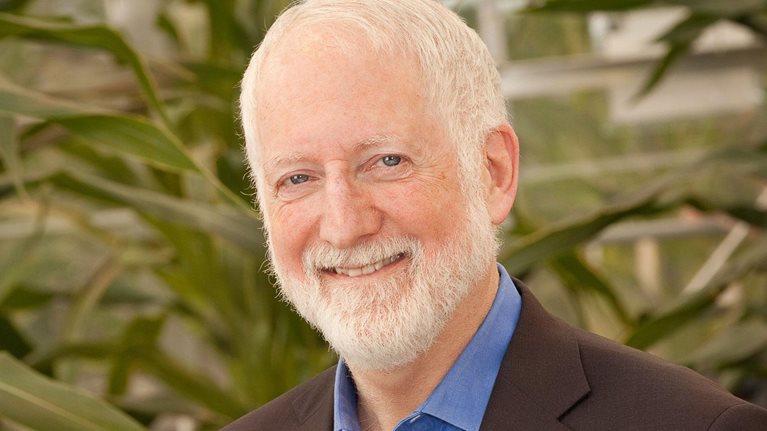An innovation strategy has to be backed with resources and patient follow-through, says Peter Kjellberg, the guest on this episode of the Inside the Strategy Room podcast, part of our Committed Innovator series. In a conversation with Erik Roth, who leads McKinsey’s innovation work globally, the chief marketing officer for the Swedish maker of products for mobile and outdoor living and the home, describes how Dometic Group seized the rapid growth in food and beverage delivery to create new products for the industry and consumers.
The following is an edited transcript of the discussion.
Listen to the podcast:
Erik Roth: Peter, could you start by telling us a little about Dometic?
Peter Kjellberg: Of course. Dometic is a global company active in around 100 markets. We actually invented the technology that allowed commercial production of refrigerators 100 years ago. Baltzar von Platen and Carl Munters were studying engineering at the Royal Institute of Technology in Stockholm and, at night, they invented things. Among them was a method of using the concept of absorption, the seemingly crazy idea that adding heat could create a cooling effect. That was the start of modern refrigeration, which is considered by some to be one of the ten most important innovations of the last century.
In the beginning, our business was mainly in the US because we were a part of the Electrolux company. For about 20 years, we have been independent and went public on the NASDAQ in 2015. If you have a leisure vehicle such as a camper or a mobile home, you will have a Dometic product in that vehicle. When you want to use a vehicle for an outdoor experience or to go out in nature, we are an enabler of that because you will need sanitation and something to eat and drink. And we have evolved. Now we are moving further into the sports and outdoor industry. We also have Dometic home products that enhance consumer experience around food and beverages.
Erik Roth: It sounds like Dometic is evolving its business around the lifestyles of consumers. For other companies trying to evolve their businesses, how would you advise them to set the right aspiration and brand positioning when moving into new categories?
Peter Kjellberg: When we did the repositioning of the company ahead of the stock listing, we consolidated 60 to 70 brands into one. That was when we started to create order from chaos. We are also an acquisitive company. We have acquired more than 30 brands that we then consolidated into Dometic, which has been a challenge in itself. That requires a strong brand platform. It can be very niche and framed or it can be looser in context, but, either way, the fence around the brand has to be very clear.
Erik Roth: How has your past experience informed the way Dometic has used the technologies underpinning its brand to move into new categories of products and services and experiences?
Peter Kjellberg: I have been engaged in these topics for many years. I started in the consumer-goods business, then went into the car industry, working for DaimlerChrysler with its luxury brands. Then I moved to another premium-products company in the outdoors sector called Thule. All those innovation road maps have been different.
In my last two journeys, it has been about putting the brand platform in the center of how we steered the business in terms of what we divested or retained and where we pursued growth. Both at Thule and Dometic, these have been true brand journeys. You can make cosmetic changes or you can do something that affects the heart of the company and has implications for culture, recruitment, organization, distribution, and the way to market. The latter option is more challenging but it is also more rewarding.
Erik Roth: Thule is a company that people who enjoy outdoor sports will be familiar with. What guided your innovation there?
Peter Kjellberg: In that case, we wanted to reframe the use of our products. When I started there, it was a business-to-business company that worked with the car industry to install racks on car rooftops. We instead became enablers of the outdoor activities for consumers. It is difficult to go skiing or biking or canoeing without Thule products, even though we are not part of the actual activity. We moved from being a subsupplier to being a lifestyle brand, and that changed the company valuation. It was done on a global scale over four years. We are talking about billions of dollars in share-price impact, and it was all about intangible value. We actually lowered our turnover for a long period of time because we sold off many businesses that did not follow the brand story. That took some guts.
Erik Roth: Reframing a brand is not just about making the decision to take the brand in a new direction but having the confidence and boldness to make those decisions consistently. We have seen many companies try to reframe their businesses but then not create consistency around the messaging, so the positive implications of the reframe don’t get captured. How did you approach that at Thule and now at Dometic?
Peter Kjellberg: At Dometic, we have doubled the turnover from SEK 10 billion to nearly SEK 20 billion in five years, with very good profitability. It is never the same process from company to company because of different cultures, starting points, maturity levels. The best, most efficient advice I would offer is to walk into your CEO’s office, look them in the eyes, and see whether they are committed and will give you true support. If you see it’s only lip service, then do something else or go somewhere else because the initiative will never fly. That is the most important thing I have learned. The commitment needs to come from the top. Otherwise, you will fail. Will they stick to their guns or will they deviate and fold when you start to get resistance in the organization because you will get resistance?
My second tip is to have patience and thick skin because you will meet a lot of people who do not want change. You will have successful colleagues who no longer fit into the new environment because they are not willing to embrace the change. You have a responsibility to create the carrot, the vision and the motivation to reach for it, but many people will struggle to understand it because it is not tangible.
Walk into your CEO’s office, look them in the eyes, and see whether they will give you true support. If you see it’s only lip service, then do something else or go somewhere else because the initiative will never fly.
Erik Roth: How do you generate the confidence that you are on the right path when you have people around you saying “I’m not going to follow” or “I have better things to do that are more important for the business, so good luck”?
Peter Kjellberg: You need to set up KPIs [key performance indicators] for both the short term and the long term. If you only track the long term, you will probably fail because you need to show proof that the new way of working is succeeding. When you have facts that show, for instance, higher demand or doubling of website traffic, it is difficult for people to be negative because you are showing an effect in the market. So create some things that will produce quick results, then use that as your proof and motivation to take the next step.
Erik Roth: Your comment on the long- versus short-cycle innovation is interesting because we interact with some companies whose R&D and innovation cycles are quite long. If you are an agriculture company, for example—and we had the CTO of Corteva on the podcast recently—some of the science takes a long time because you have to grow things. Demonstrating short-term successes is difficult when the science itself is long term.
Peter Kjellberg: Ultimately, you cannot jeopardize the reputation of the brand. If you take shortcuts on environmental or functional testing, for example, you will end up with a product that does not fulfill the brand promise. You can perhaps add innovation projects that do not require the long-term approach. In my experience, if you are used to long-term planning and apply it to smaller, simpler projects, they will also become long-term projects. You need to pursue smaller projects outside the normal process, creating start-ups within the existing organization and letting them run it.
Subscribe to the Inside the Strategy Room podcast
Erik Roth: We talk to many companies about innovation during the pandemic crisis, and what almost always comes up is speed and scale. Companies have had to pivot dramatically and take a new lens to their surroundings in terms of changes in customer behaviors and market environments. What has been your experience pushing growth and innovation in this unprecedented, dynamic time?
Peter Kjellberg: I thrive in these circumstances because it makes you think and act faster. In my business area, we now have four start-ups that were spurred by the crisis. I will give you an example. The pandemic caused restaurants to rethink their businesses because people could not dine there in person. Food orders for home delivery increased dramatically. It’s a huge and growing market, but the logistics behind it have not improved at the same pace. It is usually a person on a bike who brings your food in some kind of backpack and the food often arrives cold. Also, customers worry their food may get contaminated or tampered with on the way. And more and more older people are ordering food online, and from more expensive restaurants, which means they have higher demands.
Given our technology in cooling and heating, that triggered the idea of inventing a food courier box. Last September, I met with a company that makes electric bikes and we decided to make their electric bike and our food delivery box a joint offering. The bike company’s design is already the pinnacle of its industry and our designers loved the brand. They wanted to spend all their time working on that project, even after hours.
Erik Roth: What I like about that example is that it was a clear, valuable problem to solve. You had the technology and co-created the business model with a partner, which brings scale, capabilities, and talent together in a way that clearly unlocked some passion.
Peter Kjellberg: We are not competing, we are helping each other, and that has made it a very successful relationship. We are now overloaded with sales leads from logistics companies, restaurant chains, and vehicle manufacturers. But you have to be very clear from the start on the framework you are working under. I worked on other projects with entrepreneurs and you can end up in misunderstandings.


